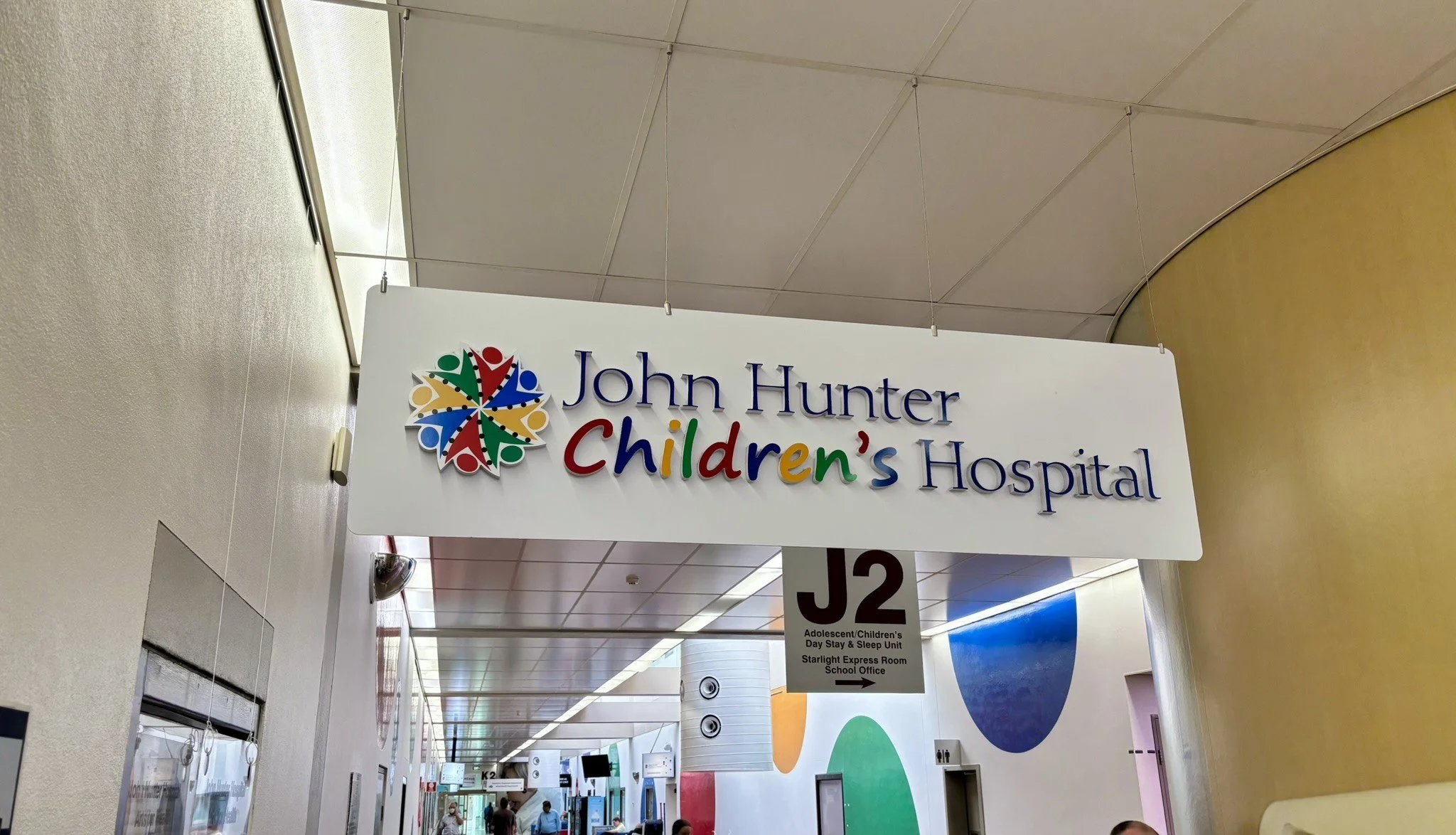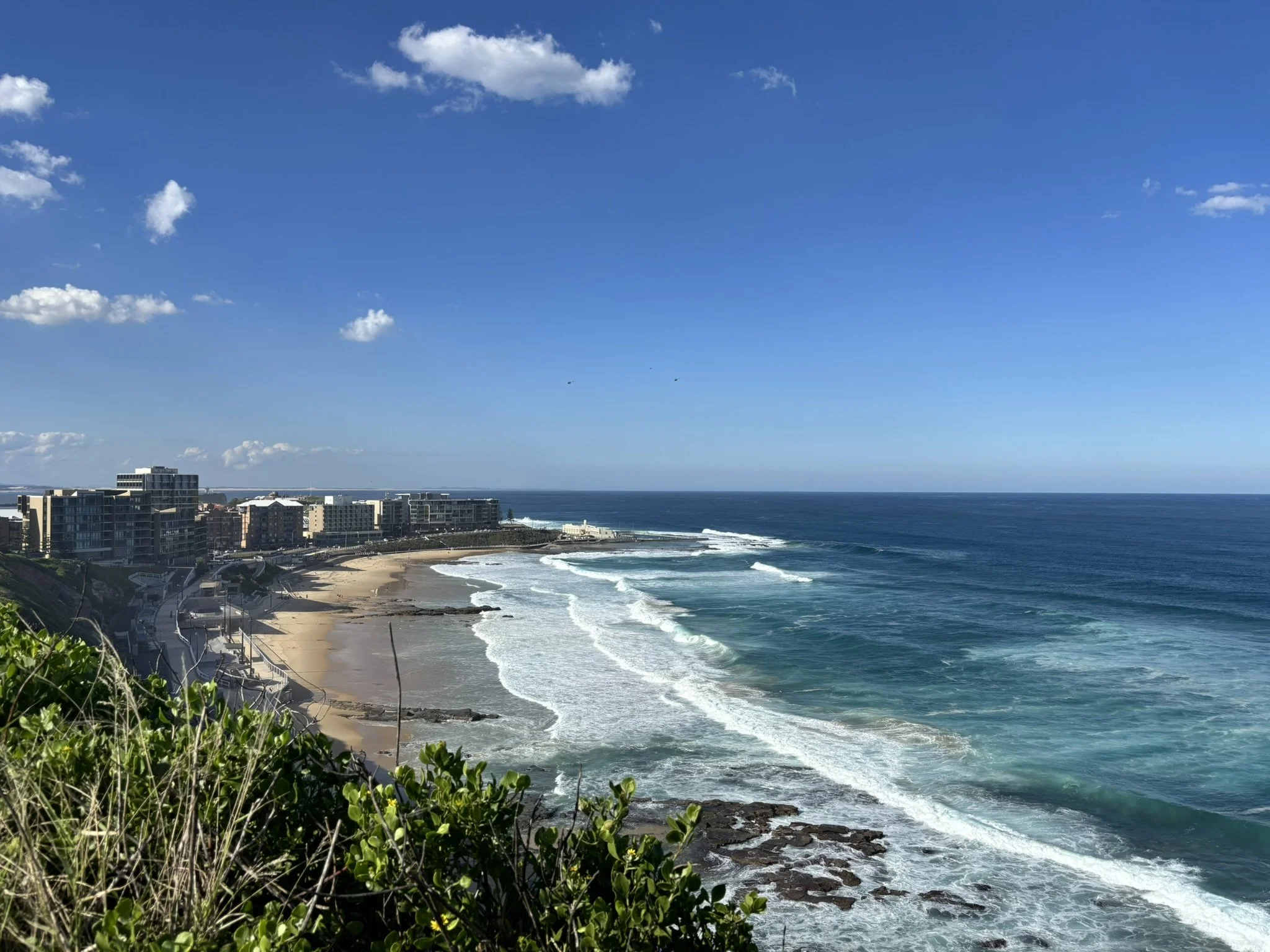Research visit to Australia, Week 2: Newcastle
This week, I had the privilege of spending time in Newcastle, Australia, learning from the people and services that support young people who self-harm. I was kindly hosted by Dr Katie Mcgill and Prof Greg Carter, both world leaders in self-harm research, who shared their knowledge and showed me around this beautiful part of the world.
One highlight was meeting koalas, wombats and kangaroos at Blackbutt Nature Reserve, a fantastic green spot just outside the city!
A sleepy koala at Blackbutt Nature Reserve
But back to the research: the visit was part of the EmCASH project, exploring what is offered to young people who seek help from emergency services after self-harm, and how we can improve the care we provide in the UK.
Although I met Prof Andrew Chanen online (he was away during my week in Melbourne), our conversation has stayed with me. He described self-harm as “the tip of the iceberg” – it’s often not the main issue or concern for the young person, just the most visible one. Instead of focusing on the behaviour, we need to understand the function of the behaviour and the young person’s goals so they feel seen and not judged.
In Newcastle, I visited services like Nexus (a short-stay unit for young people under 18) and the consultation liaison team at the John Hunter hospital. Here, young people can receive a mental health assessment within 30 minutes of arrival, a stark contrast to the waits that young people face in the UK. There are no service “targets” or siloes, but teams working together with the shared aim of supporting young people as individuals. There is a big focus on working closely with schools, families, and community services to offer support that fits around the young person, not the other way round.
Services like Safeguards and Safe Haven were also inspiring. Safeguards is a community-based team that offers outreach and telehealth, making sure that care is timely and accessible, especially in rural areas. Safe Haven is a peer-led service, offering a safe alternative to the emergency department for young people in distress. One staff member told me about a young teenager with autism who used to present to the hospital every week – now, he comes to Safe Haven instead, because it offers a sense of connection with others.
Another key part of the puzzle is schools. Catherine from School-Link helps teachers and mental health professionals work together. They’ve created handover tools so that when a young person goes to hospital, they don’t have to start from scratch when they return to school. It’s all about building a circle of support around the young person and doing what we can to avoid them needing to re-tell their stories.
But things aren’t perfect here, and Australia faces many of the same challenges as the UK when it comes to youth mental health. Long distances mean that there is a postcode lottery, and there is a workforce crisis in psychiatry across New South Wales, partly due to pay differences with other parts of the country. Services are still trying to bridge the gaps between child and adult care, especially for those aged 16 and 17 who are transitioning to adult services.
Despite these challenges, there was a clear take-home message from my week in Newcastle: connection and relationships are important. Whether through shared language, faster pathways, peer-led services or focusing on goals instead of self-harm, feeling heard makes a big difference to young people and their families. Thank you to the wonderful people, places and animals in Newcastle who made this week such a rich learning experience.
Dan :-)
John Hunter Children’s Hospital
Newcastle beach!



